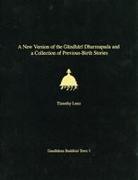Continuous Current Machine Design
BücherAngebote / Angebote:
PREFACE IN attempting to find at a reasonable price, and between one pair of covers, a text-book for the more advanced student of Continuous Current Machine Design, I have met with perpetual difficulty. It seems to me that the text-books hitherto published fall naturally into two groups those which cost too much, and those which are too special. The former have grown up with the subject, and in process of time successive editions and additions have brought them to a state reminding one of the fifth age of man. To these standard works all students are indebted though few can afford to buy them they are indeed often regarded as luxuries to be found in reference libraries only. Books of the second class are usually written to cover special ground at a special time, to act as vade mecum to a particular examination, or to render temporary assistance to the expert. In the present volume I have tried to avoid these extremes by omitting all that a student may reasonably be expected to know at the end of his second year, and by indicating the road along which designers have hitherto travelled and the direction in which the next move is likely to be made. It is my hope that the book may be a useful companion to the student, both in the drawing office and in the class-room, as well as a stimulating and suggestive guide to the teacher. In recent design the introduction of the commutating pole or interpole has been responsible for a great many changes and these account for the large proportion of this volume devoted to temperature rise. Yet, lest a change in the price of copper should some day abolish the interpoles, machines not dependent upon them are also fully considered. Both in the text and in the Examples of Procedure I have tried to lay stress upon the tentative and experimental nature of the subject, as also upon the number of variables involved, the ever- present influence of cost, and the careful comparisons that should be carried out before any design is adopted. Further, that the text might not be unduly encumbered, those pages which would otherwise look like excerptsfrom an algebra have been relegated to an appendix. Throughout the calculated examples little or no attempt has been made to carry accuracy further than four significant figures. This is, I think, rational for the practised designer will be the first to admit that the available data rarely allow of a closer approximation. It remains for me to acknowledge the substantial assistance I have received from Mr. J. Lustgarten, M.Sc., in Chapters VI., VII. , and VIII., and from Mr. Thomas Jones in the diagrams of Chapter XI. To Professor Marcus Hartog, who carefully read the proofs, I am also much indebted, as well as to the various manufacturers who have kindly lent me blocks. I dare not hope that a book compiled in the spare moments of over-full days can have escaped without some mistakes if any reader will bring such errors to my notice I shall be very grateful. 20, MOUNT ST., MANCHESTER, August, 1910. WILLIAM CRAMP. i TABLE OF CONTENTS CHAPTER I THE FORM OF MODERN MACHINES Introduction General Forms ......... 1 Present Practice Form of Field Magnets Cast Iron Cast Steeland Wrought Iron ............. 2 Cast Steel Malleable Iron Field Poles ....... 5 Machines without Pole-tips Ordinary Forms of Field-construction . . 6 Laminated Poles Comparison of Circular and Eectangular Pole Circular Pole 7 Square Pole...............
Folgt in ca. 15 Arbeitstagen

